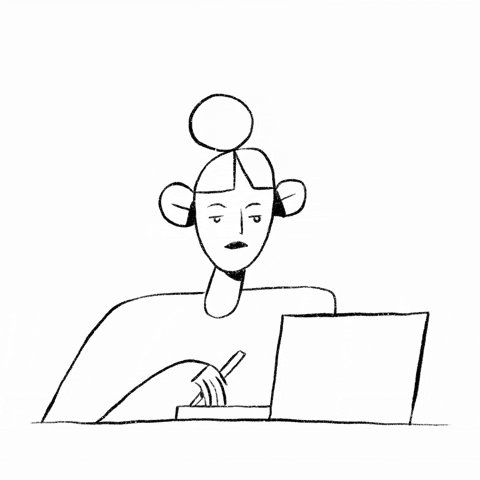Sourced from Business Insider | April 6, 2023 by Kelli Maria Korducki
As workers return to the office, striking the right work-life balance is harder than ever.
A recent article featuring more than a dozen ambitious mid-career women revealed an insidious creep of inescapable job burnout. Describing how the dynamics of their remote workplaces, coupled with pandemic-related stressors, had been seriously detrimental to their mental and physical well-being, several decided enough was enough and quit. Though their specific circumstances were unique, the women shared a trait: They'd cared far too much about their jobs, and knew it.
Burnout is considered a leading cause of the Great Resignation in which almost 100 million Americans quit their jobs in two years. Many workers who didn't quit their jobs tried caring less about them or "quiet quitting" — seemingly realizing that there are more important things than their jobs.
Yet as market forces shift worker perspectives, job insecurity increases in industries like tech and media, and with the wonky global economy, some people may instead double down on work.
But the pursuit of professional ambition can be tricky to navigate and contains both positive and negative effects. Being too focused on career can result in neglecting other aspects of life such as relationships and hobbies, whereas not caring about work can lead to feelings of malaise. So investing time in a job that aligns with personal interests and goals can be more emotionally sustainable. Achieving a balance between caring about work and not caring too much is crucial for a satisfying and fulfilling life. Research suggests that the relationship one has with their job is a significant predictor of overall happiness, yet striking this balance may be challenging, especially in recent times.
Returning to the office is a mixed bag
During the pandemic, remote work caused a blurring of boundaries between work and personal life, leading to increased stress and overwork due to micromanagement and virtual productivity-monitoring tools. However, remote work also provided some workers with emotional detachment and prioritization of other aspects of their lives. Despite a preference for flexibility, worker engagement declined in 2020 and 2021, and further in 2022, according to Gallup. Now, as return-to-office mandates become more common, hybrid and flexible work schedules are adopted, causing workers to readjust to physical office work.
“
While work friendships can stifle loneliness, the centrality of a job in American social life does not bode particularly well for Americans’ work-life balance.”
The pandemic allowed many people work from home, but some have been reminded of the benefits of working in an office, such as enforcing boundaries with employers and increasing face-to-face interactions. While work friendships can help reduce feelings of loneliness, the centrality of work in American society can also make it harder to disengage from work and contribute to workism, again, leading to burnout. Americans tend to think about work outside of work hours, with hybrid workers being the most likely to do so.
The difference between being invested in a job and being unhealthily obsessed is not clear-cut.
enter, Problematic enmeshment
Psychologist Janna Koretz specializes in helping high-performance workers and entrepreneurs with their mental health challenges. She notes that there is a fine line between being engaged in one's job and letting work become one's whole identity. It is not necessarily bad for a job to take up the bulk of a person's time and headspace, but it becomes problematic when it leads to burnout or other issues. The World Health Organization characterizes burnout by feelings of exhaustion, cynicism, distance from one's job, and reduced professional efficacy.
“”
Pro Tip: The more invested you are in your work, the more anxious you can be about work.
Investing too much in one's job can lead to burnout and sacrifices in personal life, according to this report on the social workplace by Brent Orrell, a senior fellow at the American Enterprise Institute, who suggests that workplace investment always comes at a cost.
Individuals who have achieved their career goals may realize that they have missed out on personal relationships and hobbies. And workplace transitions, such as layoffs or company acquisitions, can also trigger an identity crisis for those who have invested heavily in their jobs. Research shows that deriving a strong sense of identity from one's job can lead to imposter syndrome and anxiety.
interestingly, college-educated women are more invested in their jobs as a source of fulfillment and camaraderie than non-college-educated and college-educated men, indicating a reversal of the cultural archetype of the male workaholic. The disparity in worker investment may contribute to the gender gap in burnout, with women 32% more likely to report feeling burned out than men. This may be due to the fact that some women may feel pressure to prove themselves at work due to the cognitive dissonance of balancing a desire to spend time with their families and advancing their careers, leading them to go all in on their jobs.
Next stop: The great disentanglement
Though there's certainly a personal element in finding the right balance, burnout and its cousins are ultimately the product of organizational dysfunction. Thus, in Fall 2022, the Office of the Surgeon General released guidelines for organizations to provide workers with more autonomy, flexible and predictable schedules, respect for workers' boundaries, and increased access to paid leave to support their mental health and well-being.
The deeply entrenched societal norms that value a Protestant work ethic and less worker power in the US can make it difficult for individuals to resist the cult of workism. Unions can improve workplace standards, and workers can take small steps to improve their work-life balance. These steps include setting aside time for nonwork priorities, taking breaks during the workday, and scheduling time with friends and loved ones outside of working hours.
FULL ARTICLE








